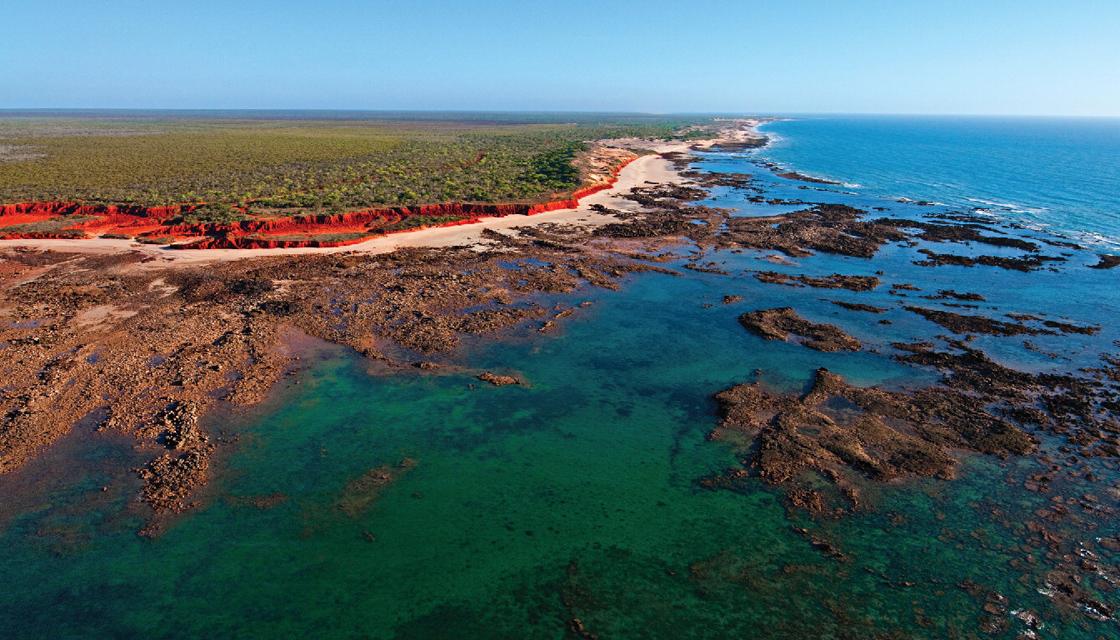A dinosaur footprint of record-breaking proportions has been found along what's been called Australia's Jurassic Park.
A team of palaeontologists from Queensland University found thousands of dinosaur tracks belonging to 21 different species across four main groups of the ancient giants along the Dampier Peninsula in Western Australia.
The research, conducted over five years, uncovered the footprints along the dinosaur 'super highway' near Broome and Walmadany.
Among them was a giant sauropod footprint which measured 1.7m long - the biggest ever recorded in the world.


"Nowhere else has as many different types of dinosaurs represented by tracks as Walmadany," lead author Dr Steve Salisbury says.
Among the tracks were five kinds of predatory dinosaur, at least six kinds of long-necked herbivores, four kinds of two-legged herbivore and six kinds of armoured dinosaurs.
Until now, most of Australia's dinosaur fossils came from the country's east coast and dated between 115 and 90 million years ago.
These tracks date back 127 to 140 million years which fills in a major knowledge gap for scientists.
"[It] gives us a look at Australia's dinosaur fauna from a period of time where we've got no other fossils...Animals we never would have dreamed of seeing in Australia had we not found these tracks and recorded them in this area."
The tracks had been known for some time - local Aboriginal tribes had woven the footprints into their creation tales.

Legend has it that the three-toed tracks were left behind by a creation being called Marala or the Emu Man.
"We recognise [these] as tracks of meat-eating dinosaurs," Dr Salisbury says.
The researchers were there by invitation of the area's traditional custodians, the Goolarabooloo, to help strengthen their case against a proposed $40 billion liquid natural gas processing plant in the area.
Goolarabooloo Law Boss Phillip Roe said it was important for the world to see "what was at stake".
It made for a "particularly intense" working environment, Dr Salisbury said.
That pressure eased when the area was granted a National Heritage listing in 2011 and the gas project fell through in 2013.

The difficult conditions made the work challenging, with the team spending around 400 hours on the reefs at low tide and dodging crocodiles and sharks to literally follow in the dinosaurs' footsteps.
The important tracks were cleaned, measured and photographed and in some cases silicone moulds were taken of them.
But the tides often worked against them.
"One of the biggest challenges is the tracks are only exposed for a short time when the tide retreats so you can't get out there and put tape measures out and take your time recording them, you've got to do it really quickly," Dr Salisbury said.
So drones were used to help map and scan the area with laser scanners which can now be used for future research.
Newshub.
